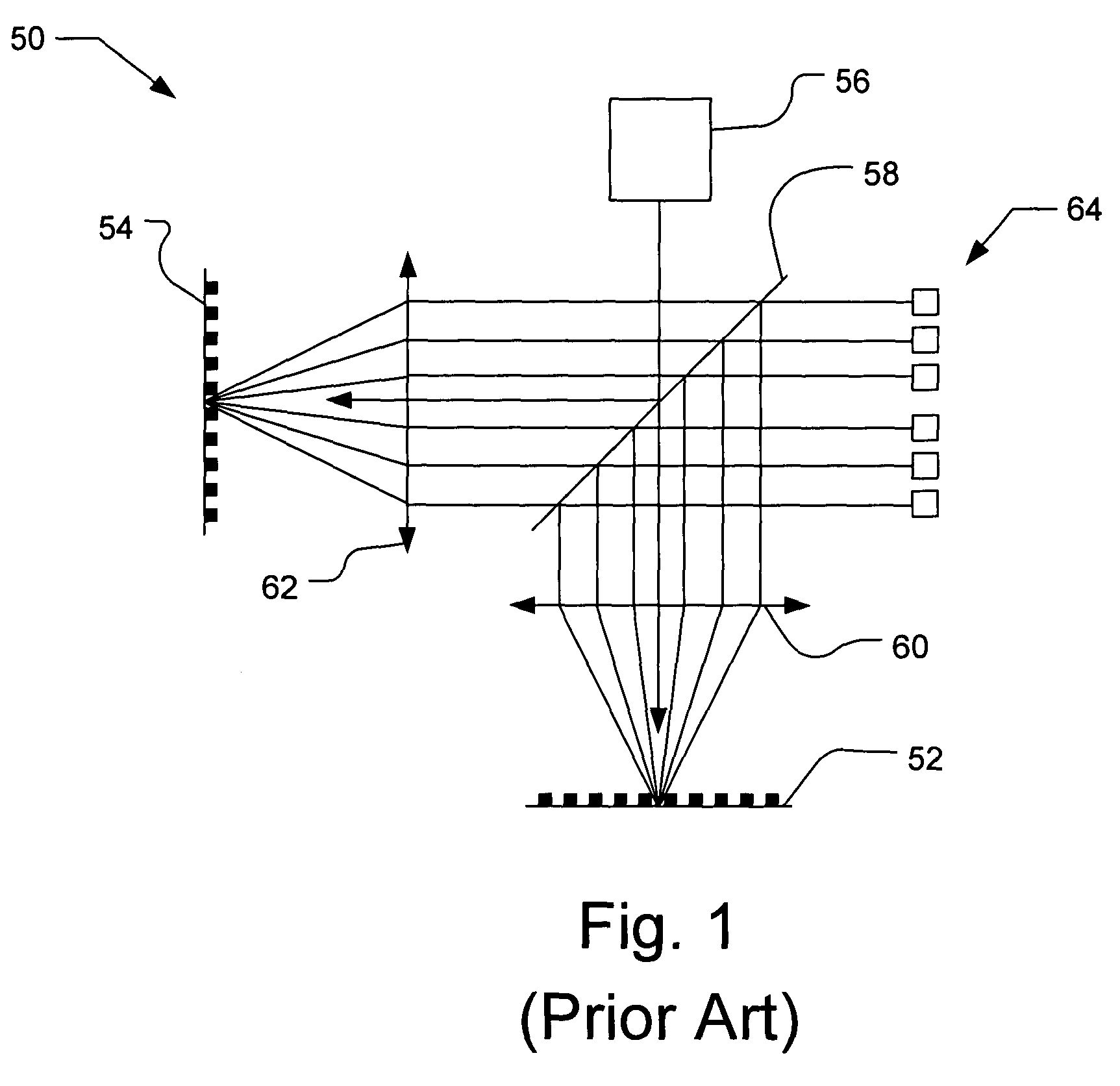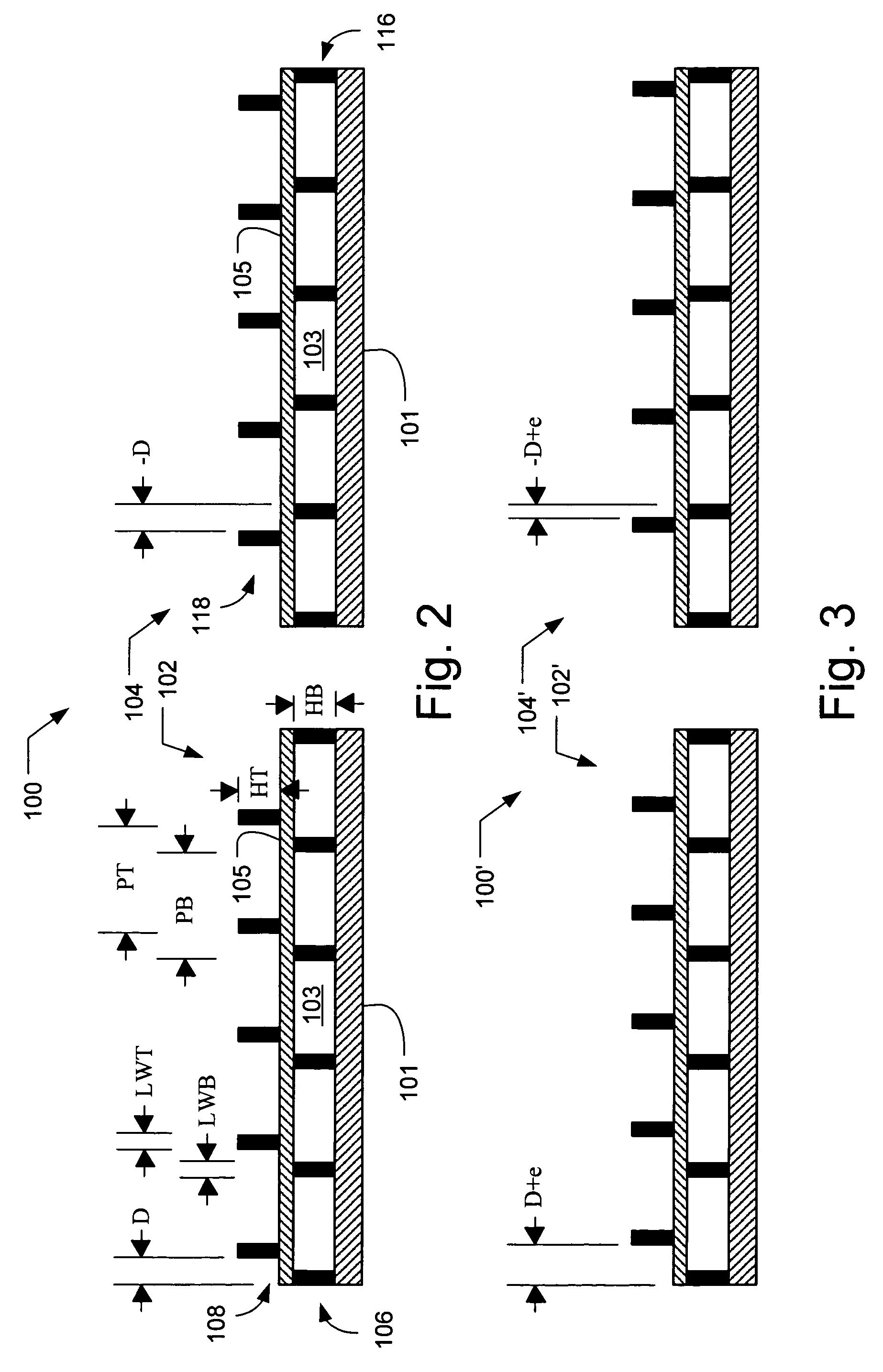Positioning two elements using an alignment target with a designed offset
a technology of offset and alignment target, applied in the field of alignment control, can solve the problems of increasing difficulty in aligning one layer with the other, increasing the difficulty of alignment, and the use of coherent light, so as to achieve the effect of minimizing the alignment error
- Summary
- Abstract
- Description
- Claims
- Application Information
AI Technical Summary
Benefits of technology
Problems solved by technology
Method used
Image
Examples
Embodiment Construction
[0049]In accordance with an embodiment of the present invention, an alignment system aligns two elements using an alignment target that includes at least one periodic pattern on one element that is aligned relative to another periodic pattern on the other element. The alignment target includes at least two locations, i.e., areas of the alignment target, at least one of which has a designed in offset between the periodic patterns. For example, both locations can have a designed in offset that is equal in magnitude but opposite in direction. Alternatively, the magnitudes may differ and / or the directions may be non-parallel. The alignment target may be used to determine the alignment error between any two elements, e.g., between the lens and the substrate and / or reticle in an exposure tool, any two stages, or any other items to be aligned. Advantageously, the alignment target of the present invention is relatively insensitive to unintentional rotation of the top element with respect to...
PUM
 Login to View More
Login to View More Abstract
Description
Claims
Application Information
 Login to View More
Login to View More - R&D
- Intellectual Property
- Life Sciences
- Materials
- Tech Scout
- Unparalleled Data Quality
- Higher Quality Content
- 60% Fewer Hallucinations
Browse by: Latest US Patents, China's latest patents, Technical Efficacy Thesaurus, Application Domain, Technology Topic, Popular Technical Reports.
© 2025 PatSnap. All rights reserved.Legal|Privacy policy|Modern Slavery Act Transparency Statement|Sitemap|About US| Contact US: help@patsnap.com



